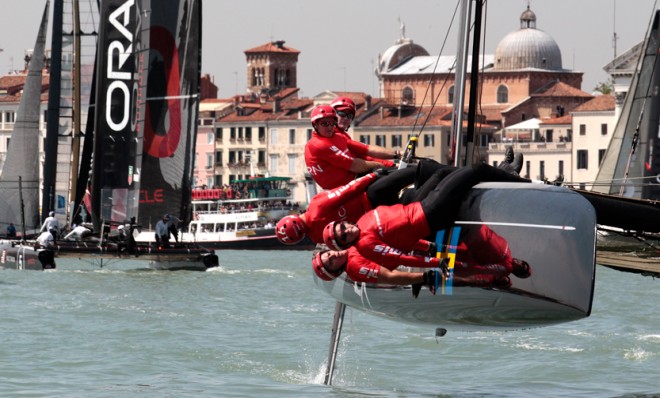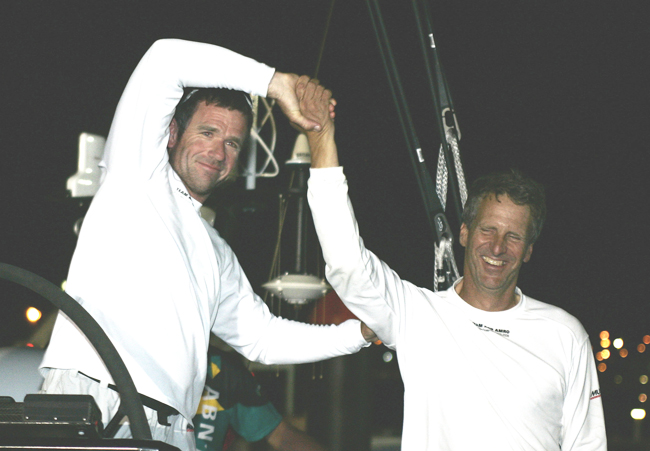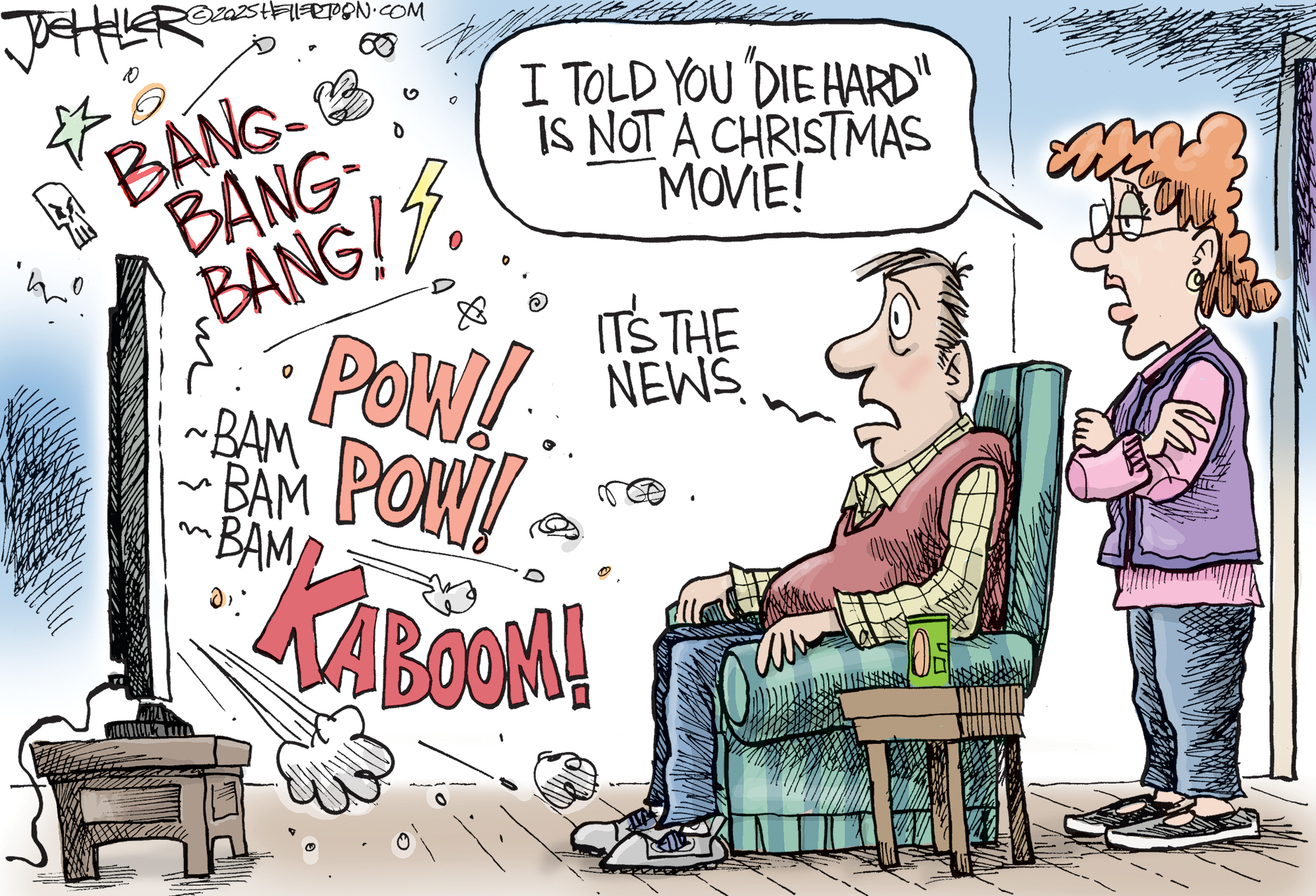The NFL's yellow first-down line: Nautical edition
Stan Honey, the inventor of that helpful TV aid, opens up about how he's taking his talents to the America's Cup


The NFL regular season kicked off Thursday night with Peyton Manning leading the Denver Broncos to a 49-27 thumping of the Super Bowl champion Baltimore Ravens. And for the casual fan watching on television, the game was made much clearer thanks to a development that we all recognize and, frankly, have started to take for granted: the yellow first-down line.
The super-helpful technology has been a staple of NFL broadcasts for years, superimposed onto the screen to give couch-bound fans a clear indicator of whether that scrambling quarterback actually managed to pick up a first down — without having to wait for on-field refs to pull out an antiquated set of chains and measure. Now, the technology's creator, Stan Honey, is taking his helpful line to sailing, a sport that's hoping to beef up it's television viewership through a marquee event.

The America's Cup is to sailing what the Super Bowl is to football, and the former starts Saturday in San Francisco, with races running through Sept. 21. Billed as the oldest trophy in the world (the first event reportedly took place in 1851), the America's Cup attracts top nautical talent from around the world — not to mention the billionaire backers who fund the exorbitantly expensive boats.
The Week
Escape your echo chamber. Get the facts behind the news, plus analysis from multiple perspectives.

Sign up for The Week's Free Newsletters
From our morning news briefing to a weekly Good News Newsletter, get the best of The Week delivered directly to your inbox.
From our morning news briefing to a weekly Good News Newsletter, get the best of The Week delivered directly to your inbox.
In the past, though, the sport has run up against more than a few obstacles in gaining mainstream fans. Races took place far away from shore (that's changing in San Francisco) and the boats weren't exactly super-sonic fast (another change — the iterations being used for this America's Cup can crank up to nearly 50 miles per hour).
Perhaps most important to wooing a general audience, though, is making your race look pretty on television, and this is where Honey shared his expertise. A top sailor himself, the Yale and Stanford grad navigated for Oracle CEO (and Oracle Team USA owner) Larry Ellison for two years in the 1990s. The men talked then about "the benefit of live graphics insertions," Honey explained in an email, but nothing came of the deck-talk at the time.
A few years later, Honey left his post as head of technology for News Corp. to found Sportvision, which eventually developed the first-down line, along with similar graphics for NASCAR, the Olympics, and Major League Baseball. When Ellison's team won the last America's Cup, thereby granting him power to stipulate certain rules and changes for the next contest, the billionaire reached out to Honey about bringing similar live-graphics technology to sailing.
"It was a totally unexpected opportunity, that I thought I would never have to combine my engineering work and sailing," Honey said.
A free daily email with the biggest news stories of the day – and the best features from TheWeek.com
Honey and his team began testing the new system, called LiveLine, in 2011. New Zealand, San Francisco, and Cascais all made the list of test sites, with various boats providing the backdrop for the attempts. Most difficult among the thousands of bugs that had to be worked out, Honey said, was figuring out how to make one moving target consistently track another.
"In other sports, the cameras were mounted on tripods, so it was easy to measure their location and their angle using encoders mounted on the tripod," Honey wrote. "These TV cameras are mounted in a helicopter, which makes it harder to measure the camera's location and orientation…Not only is the helicopter moving, but the sensor in the camera has to process pan, tilt, and zoom."
The trial runs look pretty polished:
Honey is optimistic about the potential of these visuals to draw in new viewers without turning away old hats. But of course, a backlash is possible. The first live-graphics attempt Honey made was for the NHL's 1996 All-Star Game, when he still worked for NewsCorp. The pushback from fans was fierce, and the system shuttered when the NHL switched networks from Fox Sports Television Group a few years later.
"Some sailing fans may prefer the video without the graphics," Honey conceded. But "the majority have welcomed it, and it has certainly helped our sport win new fans…We have shifted opinions about our sport with exciting boats, athletic crews, and technology that's seen as cool."
The technology certainly is cool. And NBC seems on board, becoming the first network to air the event in 20 years. Now if they can just get Bob Costas to broadcast the races, we'll really be flying.
Sarah Eberspacher is an associate editor at TheWeek.com. She has previously worked as a sports reporter at The Livingston County Daily Press & Argus and The Arizona Republic. She graduated from Northwestern University's Medill School of Journalism.
-
 Critics’ choice: The year’s top 10 movies
Critics’ choice: The year’s top 10 moviesFeature ‘One Battle After Another’ and ‘It Was Just an Accident’ stand out
-
 The small Caribbean island courting crypto billions
The small Caribbean island courting crypto billionsUnder the Radar Crypto mogul Olivier Janssens plans to create a libertarian utopia on Nevis
-
 Political cartoons for December 21
Political cartoons for December 21Cartoons Sunday’s political cartoons include Christmas movies, AI sermons, and more
